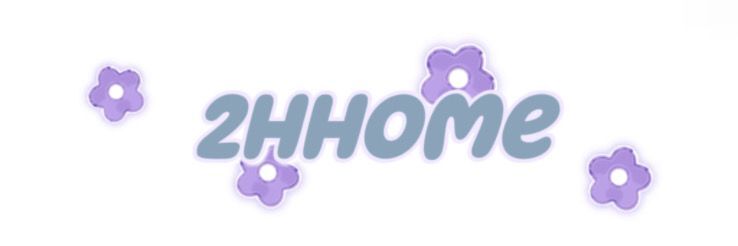How to Choose Rubber Dam Design for Sustainable Water Management in Chile?
Oct. 01, 2024
If you are looking for more details, kindly visit IWHR.
### Title.
"What Key Factors Influence Rubber Dam Design?".
### Article.
**How to Choose Rubber Dam Design for Sustainable Water Management in Chile?**.
When it comes to water management in Chile, particularly in the context of sustainability, rubber dams offer a flexible and environmentally-friendly solution. These structures, made from durable rubber material, can help manage water flow, optimize irrigation, and reduce erosion. Understanding the key factors that influence the design of a rubber dam is crucial for maximizing its effectiveness and aligning with sustainable water management practices.
**1. Purpose and Functions of the Rubber Dam**.
Before embarking on a rubber dam project, it is essential to identify its primary purpose. In Chile, rubber dams can serve various functions, including flood control, irrigation support, and recreational areas. Each application may necessitate different design considerations. For instance, if the primary function is flood control, the dam must support higher water volumes and withstand varying flow rates. Conversely, an irrigation-focused design may prioritize creating a stable water source for agricultural purposes.
**2. Site Assessment**.
An integral part of the rubber dam design process is site assessment. Various physical and environmental factors, such as river topography, soil type, and existing vegetation, should be carefully evaluated. In Chile, where geographical conditions vary widely, site-specific evaluations can significantly impact the dam’s effectiveness and longevity. Understanding the hydrology of the area allows engineers to design a rubber dam that not only fits its physical environment but also functions optimally under dynamic conditions over time.
**3. Environmental Impact**.
Related links:Top Rubber Dam Designs for Chile: Solutions to Common Issues
Essential Guide to Antistatic Shielding Covers
4 Tips to Select the Best Eco-Friendly Packaging Solution
Top 5 Benefits of Stretch Film for Efficient Bundling
Ultimate Guide to Stretch Film for Furniture Protection
Essential Considerations for Choosing Custom Printed Packaging Solutions
EPE Protective Packaging vs. Traditional Foam: Which is Superior?
Sustainability is at the forefront of modern water management strategies. As such, the environmental impact of a rubber dam must be considered during the design phase. It’s essential to analyze the potential effects on local ecosystems and wildlife. For instance, the dam should allow for the migration of fish and other aquatic species, mitigating negative impacts on biodiversity. Employing sustainable design principles can help ensure that the rubber dam harmonizes with its surroundings rather than disrupt them.
**4. Material Selection and Durability**.
The choice of materials is critical in the design of a rubber dam. Different types of rubber vary in terms of durability, resistance to UV rays, and adaptability to changing water conditions. Given Chile's diverse climate and environmental conditions—from coastal regions to arid interiors—selecting a material that withstands local weather patterns is crucial. Furthermore, incorporating recycled material can enhance sustainability, reducing the dam's carbon footprint.
**5. Maintenance Considerations**.
Once a rubber dam is constructed, its long-term effectiveness hinges on proper maintenance. Establishing a maintenance regime from the outset can prevent common problems such as leakage or material degradation. This often involves regular inspections and prompt repairs to address any issues that arise. Ensuring that local communities are engaged in the maintenance process can foster a sense of ownership, crucial for the project's longevity and success.
**6. Community Engagement and Benefits**.
Involving local stakeholders can lead to a more successful outcome for a rubber dam project. Engaging communities in the planning and design process can help identify specific needs and concerns, ensuring the dam serves its users effectively. Moreover, the direct benefits of rubber dams—such as enhanced irrigation and improved water availability—can bolster community support and foster sustainable development practices.
**Conclusion**.
Choosing the right rubber dam design for sustainable water management in Chile involves careful consideration of various factors ranging from purpose and site assessment to environmental impact, material selection, and maintenance. By holistically addressing these elements, planners and engineers can create effective solutions that balance human needs with environmental stewardship, ultimately contributing to sustainable water management that serves both current and future generations.
If you are looking for more details, kindly visit rubber dam design for Chile.
Related links:Are oversized VCI bags the new fashion trend?
Revolutionizing Electronics Storage: The Future of ESD Packaging Trays?
What Are the Benefits of Polyester (PET) Film?
How to Choose Electrical Insulation Film?
Benefits of Solar Control Film in 2024
EPE Foam Barrier Sheets vs. Traditional Foam: Which Is Better?
What are the benefits of using VCI Multi-Metal Film?
139
0
0
Related Articles
-
104
0
0
-
103
0
0
-
102
0
0
-
VCI Anti-Rust Film vs Traditional Methods: Which Protects Better?
VCI Anti-Rust Film vs Traditional Methods: Which Protects Better?
95
0
0
-
85
0
0
-
76
0
0
-
75
0
0
-
74
0
0









Comments
All Comments (0)